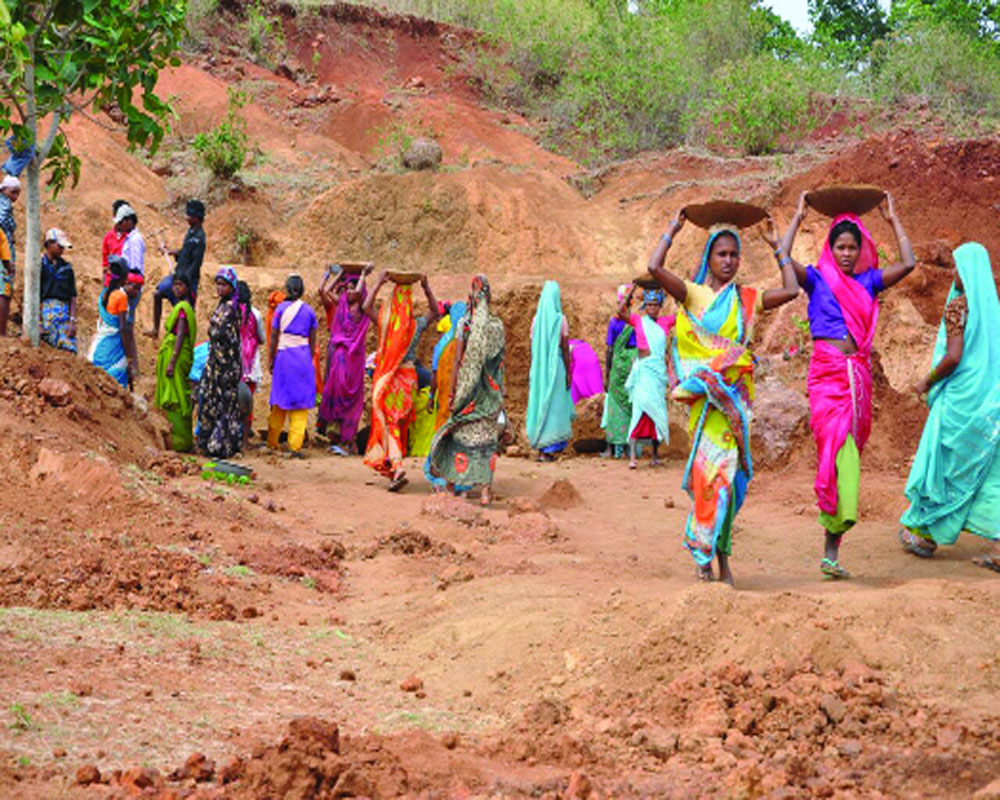Gram Swaraj recently got a fillip as Government okayed continuation of Rashtriya Gram Swaraj Abhiyan
One of the unique features of governance in India is that its rural landscape is characterised by a system wherein each village and local unit is responsible for upgrading its own administrative structure and executing its developmental activities. This is facilitated, to a large extent, by the existence of panchayati raj institutions, which, as per the Eleventh Schedule of the Constitution, are tasked with “economic development, strengthening social justice, and implementation of Central and state government schemes.”
Here, it would be apt to briefly recount the history of the panchayati raj system in India, which came into effect through the 73rd Constitutional Amendment in 1992. The modern panchayati raj system was subsequently formalised in 1999, on the basis of a study by an amalgam of Indian committees recommending a more decentralised administration, and jointly financed by local body grants as approved by the respective State Finance Commissions, as well as funds devolving from state government coffers and those allocated under Centrally-sponsored schemes.
The roots of this system of local self-governance in rural India, however, lie in Mahatma Gandhi’s dream of building a vibrant and effective democracy in the villages of the country, which would enable the rural population to attain economic and social self-reliance through access to various services within the village itself. Popularised as ‘Gram Swaraj’, which translates as ‘self-rule in the village’, this concept implies decentralised functioning through adherence to certain human principles and values, such as the right to full employment, social equality, and self-sufficiency deriving from the ethos of Swadeshi or the consumption of only indigenous goods. Hence, if efficiently implemented, Gram Swaraj would transform every village in the country into a self-sufficient and autonomous entity, benefiting from sustainable development within a humanitarian framework that guarantees both personal happiness and dignified living for the rural residents. Although fructifying Gandhiji’s utopian dream would seem like a tall order, its fulfillment, at least partially, was given a fillip in the form of the launch of the Rashtriya Gram Swaraj Abhiyan (RGSA) or Transformation of Aspirational Districts programme by the Union Ministry of Panchayati Raj on April 24, 2018, by Prime Minister Narendra Modi. It was mandated that the RGSA would be implemented as a core Centrally-sponsored scheme for four years, viz., from 2018-19 to 2021-22, with equivalent state and Central shares.
Further, the selection of districts was to be based on various parameters like gender equality, poverty alleviation, livelihood generation, and access to critical services like public health, nutrition, education, sanitation, and drinking water, all of which correspond to the UN’s Sustainable Development Goals (SDGs) and also fall within the jurisdiction of the Panchayats.
The focus on Gram Swaraj has once again gained leverage, with the Cabinet Committee of Economic Affairs recently approving the continuation of the revamped RGSA from fiscal years 2022-23 to 2025-26, co-terminus with the tenure of the Fifteenth Finance Commission, and apportioning a total outlay of Rs 5,911 crore for it, comprising the Central and state shares of Rs 3,700 crore and Rs 2,211 crore, respectively.
In this context, a survey of different levels of stakeholders and panchayat functionaries across 12 major states, undertaken by the National Council of Applied Economic Research (NCAER) during the reference period 2019-20, assumes critical significance. The NCAER survey covered both the Panchayats Extension to Scheduled Areas (PESA) and the Aspirational Districts. The findings suggest the need for improving training inputs at the village level to ensure optimal effectiveness and outreach of the programme.
The survey also highlighted the challenges confronting the training programmes at the Gram Panchayat (GP) level, which could achieve better outcomes with the provision of more modern infrastructure, training equipment and tools.
In keeping with the adage that ‘practice makes perfect’, the institutional training being imparted to the stakeholders and functionaries at the Panchayat level needs to be a sustained and intuitive process, supplemented by handholding and mentoring by the elected representatives in the concerned aspirational districts.
Last but not the least, the revamping process of the RGSA must pervade the entire administrative ecosystem, as the changes proposed in the NCAER study are unlikely to become reality unless governance at the grassroots level in the GPs is made more participatory, technology-driven, and performance-oriented. Clearly, a paradigmatic transformation has to be ushered in at all levels to optimise the functioning of the GPs and justify the time and money being invested by the Government in the Gram Swaraj Abhiyan.
Saurabh Bandyopadhyay is Senior Fellow, Anupma Mehta is Editor, and Laxmi Joshi is Fellow at NCAER. The views expressed are personal.)


























